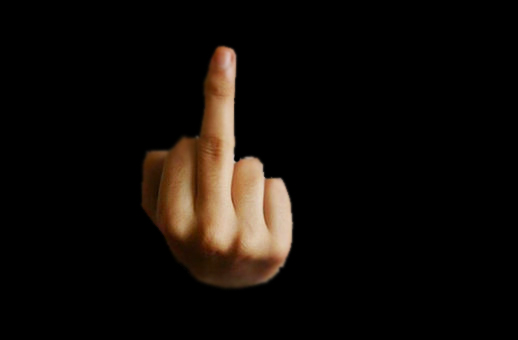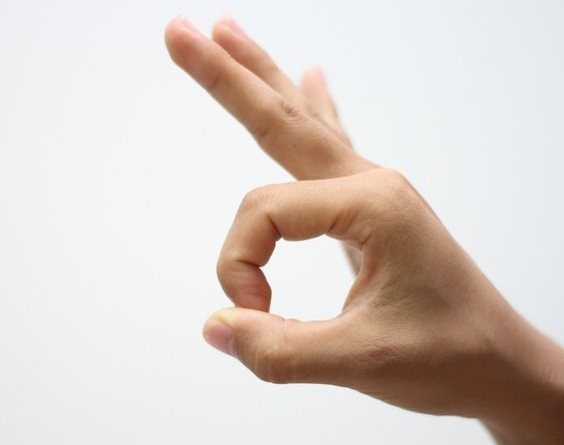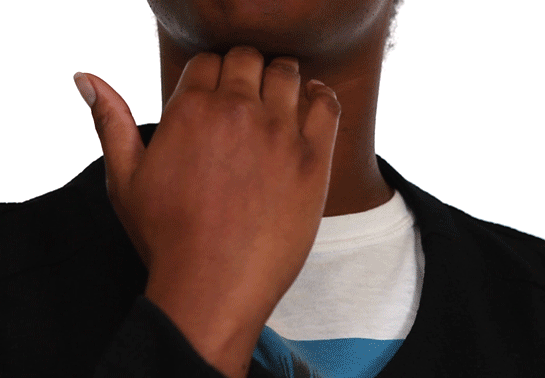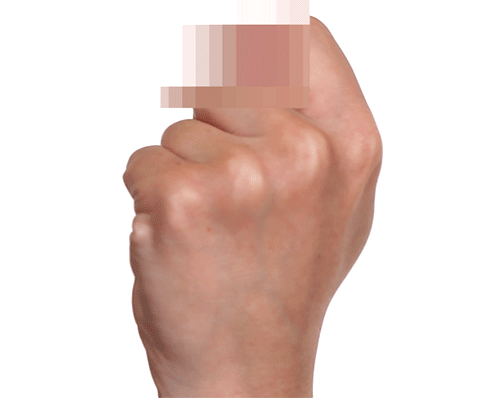Worried about your upcoming trip abroad because you don't speak the native language? That's probably the least of your problems. Words comprise but a mere 7 to 35 percent of human communication. The rest comes via body language: gestures, posture, facial expressions, proximity and touch. What you should be thinking about are local hand gestures, especially if you're someone who can't speak without animatedly flinging your hands and arms about. Many hand gestures that are innocuous or positive in one country can be incredibly insulting or obscene in another. To make things more difficult, a gesture's meaning can also differ within a country, depending upon the locale. It may also have a particular meaning only to one subset of people, such as gays or the elderly, no matter where in the country you are. You could think keeping your hands in your pockets will solve the problem. But that's considered offensive in places, such as France, Japan and Sweden . Maybe you can keep your arms crossed over your chest? Nope. That's a sign of arrogance in Finland, for one. What to do? Before you finish packing your bags, familiarize yourself with the following 10 hand gestures. Some are considered very positive in the U.S., but all are deemed insulting in at least one spot around the globe.
10.The Middle Finger

The most offensive gesture in America is flipping someone off. Shooting the bird. Giving them "the finger." The gesture means screw you. Bug off. Or, to be more blunt, f*** you. The gesture involves sticking up your middle finger with your palm facing in. You can make the sign calmly, or angrily extend your arm toward the intended recipient, depending on how upset you are.
9.The A-OK

Is everything all right? In America, you might respond to such a question by flashing the "A-OK" sign, created by touching your forefinger to your thumb and pointing the remaining three fingers straight up. While the origins of the action are unclear, it appears the symbol is an attempt to create a crude "o" and "k" (the "o" is certainly clear, though not so much the "k"). This gesture is also widely used in the diving world to both ask if a diver is fine, and for the diver to respond back that she is. Don't make this gesture in Brazil, however, where it's akin to giving someone the finger. In Greece and Turkey, it's also seen as quite vulgar, and insinuates the person to whom it's given is a homosexual. In some Middle Eastern countries, the "A-OK" is the symbol for the "evil eye". Perhaps the worst misuse of this sign in recent history was committed by then-Vice President Richard M. Nixon in the 1950s. The VP emerged from his plane in Brazil, made an "A-OK" sign with each hand, and enthusiastically wagged them to the assembled crowd. Not surprisingly, the people were astounded and infuriated at this double insult.
8.The Chin Flick

Among all of the possible hand gestures that can be misinterpreted around the world, the chin flick may be the least confusing. So if you have a habit of flicking your chin while you talk, don't sweat it too much. In much of Italy, people will make the gesture — which involves placing the fingertips of one hand under your chin, pointing at your neck, then flicking them out towards the person with whom you're speaking — to indicate they couldn't care less (about you, what you're saying, your dog, the scrape on your pinkie). Frankly, my dear, they just don't give a damn. It can also mean they're positively not willing to do something. In Northern Italy, France, Belgium and Tunisia, the chin flick can be used to tell someone to get lost (in a little bit more aggressive language than this). And speaking of aggressive, if someone wants to be quite emphatic about their intended message, they will make the gesture quite forcefully.
7.The Fig

It's such a fun game to play with babies and tots. "I've got your nose!" you say playfully, after you've made a gentle swipe. To prove you've really snatched their proboscis, you hold up your hand, curled in a fist, with your thumb sticking up in between your pointer and middle finger. Your thumb, of course, is supposedly the baby's nose. Alas, while this game is common in the U.S., Australia and Canada, it's never played in Turkey. In that country, the hand gesture, commonly known as "the fig," is like calling someone an unprintable name. It's also quite insulting to people in Indonesia, Italy, India, China and Russia. This gesture hails back to ancient times, when the Romans used it to indicate sexual union. In a positive manner, that is — to wish someone good luck and fertility. It also was seen as a protective measure against the evil eye. The Romans called the gesture mano fico, or fig hand, as they felt the thumb-in-fist looked like a woman's private parts. "Fica" is Italian for fig, and also slang for vulva; Romans equated figs with female fertility. Interestingly, the gesture is also the same used for the letter T in American Sign Language. Oops.
6.The Horn Fingers

Harley Clark had no idea what he was doing when, as head cheerleader at the University of Texas at Austin, he introduced a hand gesture to his fellow students at a rally. Clark said the new gesture was now the official sign for the Texas Longhorns football team, to be used whenever they played. The sign, made by raising the index and pinkie fingers while holding the rest down, was thought up by a classmate, and was supposed to resemble the school's horned mascot. After the rally, Clark was chewed out by an administrator, who said he had no authority to make such a proclamation. Besides, the gesture had a terrible meaning in Italy. But the "Hook 'em Horns" sign was immediately embraced by Longhorns fans, and a decade later by American rockers, who used it to encourage fans to party on. Not a big deal in America, of course, but in countries such as Italy and Spain, as well as in Brazil, Colombia and some Baltic nations, the sign (known as a corna or cornuto) is an offensive gesture letting a man that, "Hey, your wife's a whore." The "bull horn" insult dates back at least 2,500 years — bulls used to be castrated to make them calmer. The gesture is also used as a satanic salute. This became problematic for President George W. Bush when, in 2005, he flashed the Hook 'em Horns sign at his second inauguration. Some Nordic newspapers proclaimed he was hailing Satan. In 1985, use of the gesture also caused five Americans to be arrested. The group, visiting Italy, was celebrating a major Longhorns victory by dancing with "devil horns" near the Vatican.
翻译:张韵可 审校:Shrsvbeiftnkvdc 来源:前十网












